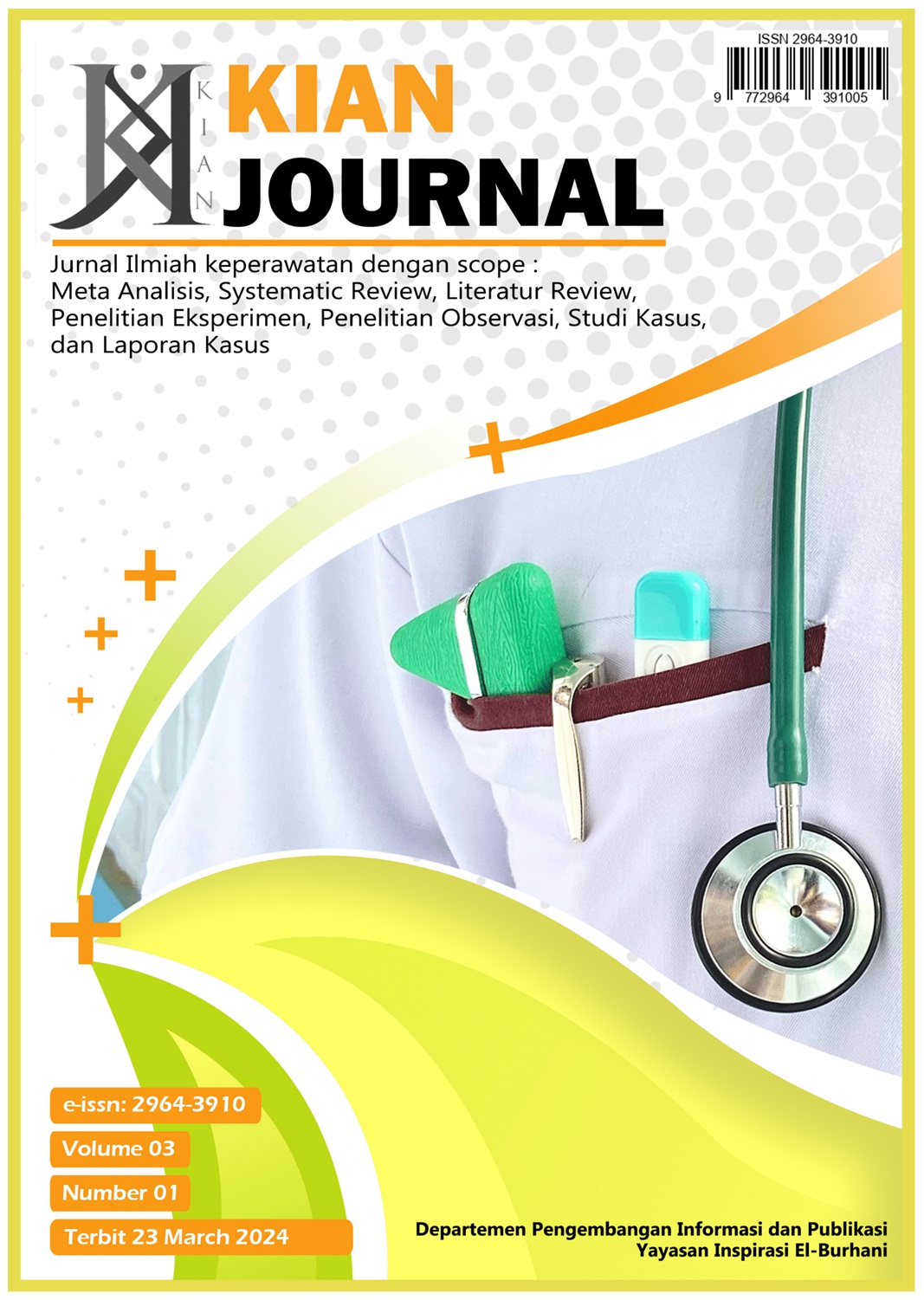Foot Exercise Implementation in a Patient with Physical Mobility Impairment due to Diabetes Mellitus
DOI:
https://doi.org/10.56359/kian.v3i1.551Keywords:
Diabetic Neuropathy, Muscle Strength, Physical Mobility, Case Report, Foot ExerciseAbstract
Introduction: : Diabetes Mellitus (DM) is a non-communicable disease that continues to show an increase globally, including in Indonesia. According to WHO data in 2016, as many as 422 million adults in the world have diabetes. This disease is caused by insulin deficiency, either relatively or absolutely, and often causes complications such as peripheral neuropathy which causes decreased sensation in the feet. One of the steps to prevent these complications is through foot exercises. Foot exercises are special physical exercises for diabetics that aim to prevent wounds, improve blood flow, strengthen small muscles in the feet, and prevent deformities due to nerve disorders and muscle weakness.
Objective: This case study aims to implement foot exercises in patients with impaired physical mobility with diabetes mellitus.
Method: This research uses a descriptive method in the form of a case study with a nursing approach which includes assessment, nursing diagnosis, nursing care plan, nursing implementation, and nursing evaluation. Data collection was done by interview, observation, physical examination, and documentation.
Result: After the assessment, it is known that Mrs.D obtained a nursing diagnosis of impaired physical mobility associated with decreased muscle strength with diagnosis number D.0054, after being given implementation in the form of foot exercises for 3 days with a duration of 5-7 minutes a day, the nursing problem of impaired physical mobility of the client is partially resolved which is characterized by increased muscle strength with muscle strength values on the right lower extremity 4 and the left 5.
Conclusion: The implementation of foot exercises has proven to be useful for reducing movement limitations and increasing muscle strength in all extremities, the benefits of this foot exercise will be maximized if done gradually and periodically.
Downloads
References
Afriani, D. (2024). Textbook of epidemiology of non-communicable diseases. NEM Publisher.
Bachri, Y., Prima, R., & Putri, S. A. (2022). Risk factors associated with the incidence of diabetic foot ulcers in patients with diabetes mellitus at Prof. Dr. Ma. Hanafiah, SM Batusangkar in 2022. Journal of Research Innovation, 3(1), 4739-4750.
Fajriati, A. M., & Wijayanti, A. C. (2021). The Relationship Between Smoking Behavior and the Incidence of Type 2 Diabetes Mellitus in Surakarta City. University of Muhammadiyah Surakarta.
NABIILAH, F. H. (2022). Gerontic Nursing Care for Mrs. H with the Main Problem of Physical Mobility Disorders Medical Diagnosis of Diabetes Mellitus at Uptd Griya Wreda Surabaya. STIKES HANG TUAH SURABAYA.
Najah, F. L., Permana, Y., Firmansyah, A., Marliany, H., Setiawan, H., Rohman, A. A., ... & Indriastuti, M. (2023). Calgary Family Intervention Model Approach to Improve Quality of Life for Diabetes Mellitus Patients. KnE Social Sciences, 1-10.
Setiawan, H., Suhanda, S., Roslianti, E., Firmansyah, A., Fitriani, A., Hamdani, D., ... & Rahman, N. A. (2022). Health Education, Screening and Diabetic Foot Excercise in Cimanggu District, Bogor. ABDIMAS: Jurnal Pengabdian Masyarakat, 5(2), 2410-2415.
Simamora, F. A., Siregar, H. R., & Hidayah, A. (2020). The effect of Diabetic Foot Gymnastics on reducing neuropathy in patients with type 2 diabetes mellitus. Journal of Education and Development, 8(4), 431.
Yuliani, L., Adyas, A., & Rahayu, D. (2023). Factors Associated with the Incidence of Abortion. Scientific Journal of Permas: Scientific Journal of STIKES Kendal, 13(3), 1107-1116. https://doi.org/10.32583/pskm.v13i3.1208
Downloads
Published
How to Cite
Issue
Section
License
Copyright (c) 2024 Adinda Aulia, Ade Fitriani, Dadi Hamdani

This work is licensed under a Creative Commons Attribution 4.0 International License.














